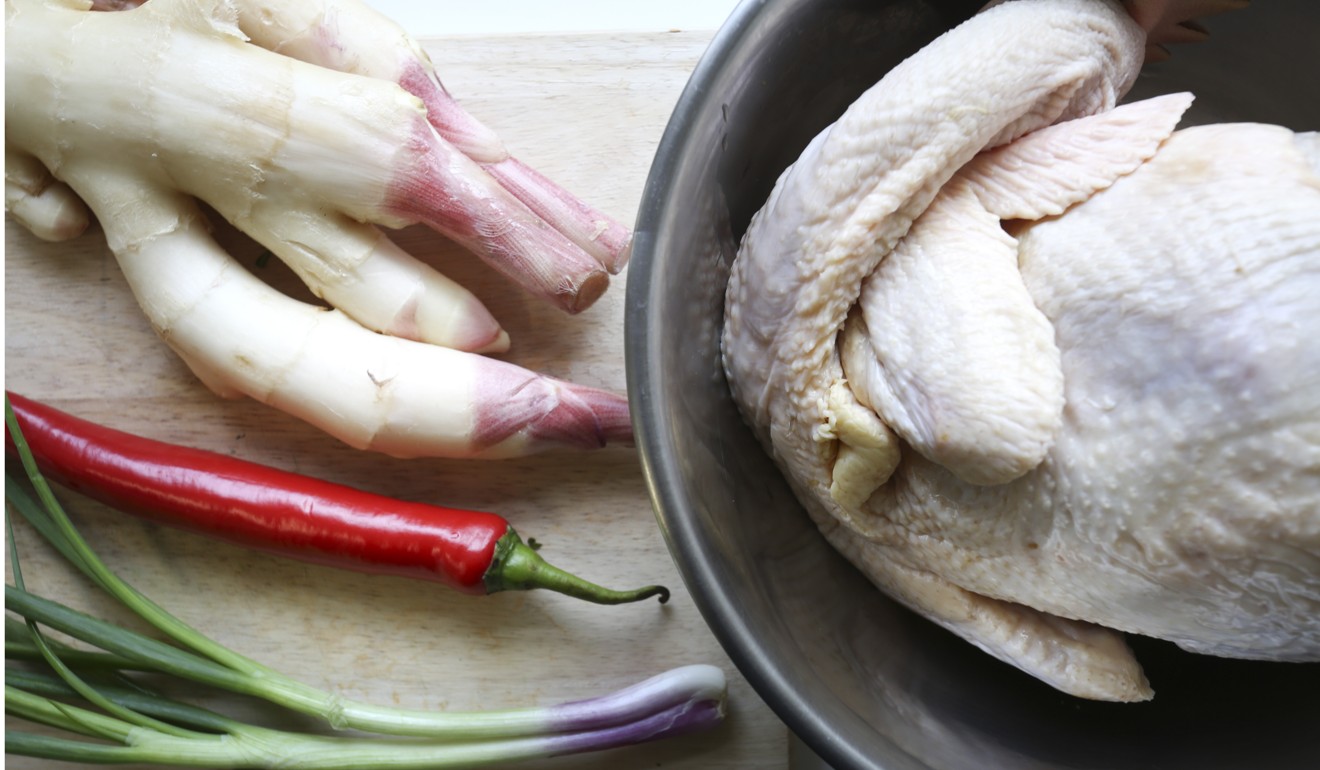
Susan Jung’s recipe for Chinese braised chicken with pickled young ginger
The best young ginger is available in June, so make the most of it now
It’s around this time of year that you start to see young ginger in the market. With its pink or green tips, thin, pale skin and moist, mild flesh, this ginger – also called spring ginger – is very different in looks and flavour from the hard, tan rhizomes with a fiery taste that you can buy year-round.
Most people are familiar with young ginger in pickled form, which is served with sushi because it helps to clear the palate between bites of some of the fattier, more strongly flavoured types of fish.
Pickled ginger is easy to make, and while a good accompaniment for fish, it’s delicious too when cooked with chicken in a Chinese clay pot.
Pickled young ginger
A Chinese chef once told me that the best young ginger is available in June, and that’s when he makes a year’s supply of pickled ginger for his restaurant.
Unless you plan to give it away (and it does make a nice gift), you’ll want to make it in smaller batches. Look for small, firm hands of young ginger.
Be sure to buy good-quality Japanese rice vinegar. Check the label: some so-called rice vinegars are made of distilled white vinegar, with flavourings added. Also avoid the sweetened rice vinegar that’s meant for sushi rice.
600 grams young ginger
50 grams kosher salt or sea salt (without iodine)
About 50 grams granulated sugar
60ml water, boiled then cooled
500 grams pure rice vinegar
Break up the hands of ginger at the joints and trim off and discard any bruised parts. Scrape away the thin, papery skin (it’s easiest to use a teaspoon to do this), then rinse the ginger. Cut the ginger into 2cm pieces, sprinkle them with the salt and mix to combine. Refrigerate for at least eight hours, mixing occasionally.
The next day, sterilise a heat-proof glass jar that’s taller than it is wide (so there’s less surface area): wash the jar then rinse it with hot water. Fill the jar with boiling water, leave it for several minutes, then drain it. Invert it on a rack so it can air-dry.
Rinse the ginger thoroughly under cold water. Drain and dry it with paper towels, then put it in the jar. Pour the boiled and cooled water into a bowl, add the sugar and stir until it’s dissolved.
Stir in the rice vinegar and taste the mixture: if it’s too acidic, add more sugar. Pour this over the ginger – it should be enough so the ginger is “swimming” slightly in the liquid. Seal the jar and leave at room temperature for a week, shaking the jar frequently.
After a week, taste the ginger. If it’s sufficiently pickled, put the jar in the fridge; if not, leave for several more days at room temperature.

Chinese braised chicken with pickled young ginger
1 fresh chicken, no larger than 1.2kg, cut through the bone into bite-size pieces
40ml soy sauce
30ml rice wine
½ tsp fine sea salt, or more to taste
¾ tsp granulated sugar
15 grams cornstarch, or more as needed
5ml sesame oil
Oil, for frying
150 grams pickled ginger, drained
2 red banana chillies
2-3 spring onions

Pour cooking oil into a wok to the depth of about 7cm. Heat over a medium flame until the oil reaches 180 degrees Celsius. Fry the chicken in batches, just long enough to sear the exterior but not cook the meat (about one minute), stirring frequently. Drain the chicken on paper towels. Keep the marinade in the bowl.
Put the chicken into a large clay pot. Pour 100ml of water into the marinade in the bowl, stir well, then pour this over the chicken. Place the pot over a medium flame, cover with the lid and bring to the boil. Lower the flame and simmer for 30 minutes, or until the chicken is cooked.
Slice the banana chillies on the diagonal about 3mm thick, and the spring onions into 3cm lengths. Stir the chillies and spring onion into the pot and cook for another five minutes. Taste the sauce and add more salt, if needed, and check the consistency – it should lightly coat the chicken pieces.
If needed, dissolve a little cornstarch in some water and pour this into the simmering liquid. Cook until the sauce thickens sufficiently, stirring occasionally.
Serve with steamed white rice. Serves six as part of a Chinese meal.

